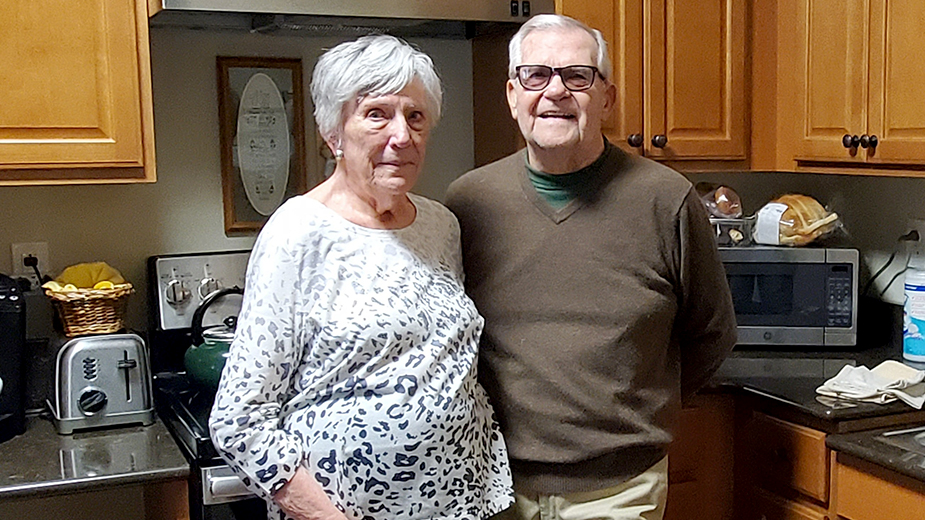YOUNGSTOWN, Ohio – Many businesses have been reeling from the worker shortage since the pandemic began but the senior care industry has been dealing with it for a lot longer.
Still, representatives are hopeful that the industry is adapting.
Occupancy at senior living centers dipped only slightly in the Mahoning Valley, with sources citing the pandemic as the culprit.
At Heritage Manor, there’s no shortage of referrals or people interested in living there – the battle has been bringing staff up to full employment, says Eric Murray, executive director of senior services. Because of staffing challenges, which have plagued every industry over the course of the last two years, occupancy at Heritage Manor dropped 10%.
There’s room for hope, though, Murray says. “We’re seeing applicants. We are optimistic” about increasing the number of employees so more residents can settle in at Heritage Manor.
In Trumbull County, Grace Woods Senior Living in Niles has experienced a “stable” occupancy rate, says Ed Fabian, owner. “We haven’t had a lot of difficulties compared to other [facilities],” he says. “We’re a small operator.” However, “losing a couple [of residents] is significant for us.”
Although there wasn’t a drastic dip in occupancy at senior living centers operated by Shepherd of the Valley, there was a noticeable decline, says CEO Rich Limongi.
When the pandemic started in 2020, the average occupancy was around 85%, he says. Through the end of 2021 into 2022, the average occupancy hovered around 68%. The good news, according to Limongi: “We’re starting to see things get better.”
Occupancy declines could be attributed to people taking care of loved ones at home, Murray and Limongi agree.
Park Vista of Youngstown similarly has experienced some decline in occupancy, but this year looks to rebuild. “Our goal is to provide the highest level of care to residents in need of skilled nursing and rehab services,” says Brittany Cabuno, marketing director.
Like other communities, Park Vista continues to accept new patients and residents. Taking it a step further, Park Vista has opened a temporary COVID-19 unit, “to help those who needed rehabilitation after being sick with COVID,” Cabuno says.
Workforce numbers directly affect how many residents can be housed at a senior living center. Having a slightly lower occupancy has allowed a better patient-to-employee ratio. But it’s also brought on another issue: staff burnout.
“There’s an obligation to our workers to keep them safe,” Murray says, explaining why Heritage Manor remains slightly lower in occupancy than before the pandemic. “The last two years have been hard on the industry,” he says.
Sharing similar concerns is Limongi, who says not as many people are heading into the senior care industry as in years past. That trend was noticed before 2020.
“People aren’t entering the adult and retirement care industry, specifically nursing,” Limongi says. “It’s still a challenge hiring LPNs.”
The pandemic heightened this shortage and, he says, it’s likely that will continue.
Job applicants are more interested in other areas within the Shepherd of the Valley system, such as dietary and housekeeping, Limongi says. To build interest and relationships, Shepherd has partnered with most of the nursing schools in the Mahoning Valley, inviting students to perform clinicals at each of its centers.
Meanwhile, the pandemic notwithstanding, a new generation is starting to enter senior centers: baby boomers. As a result, accommodations have changed to ensure more social activity is offered.
In the age of internet technology, “There’s more public information available for people to make informed decisions” about where to live, Murray says.
At Heritage Manor, ongoing renovations will lead to all-private rooms that offer greater privacy and distance from others. More time also is spent with residents and patients, leaving staff to invest in each person, Murray says.
“These are former engineers, steel workers,” he says. “We shape our programming around who they are as a person.
A similar approach is taken at Grace Woods, Fabian says. “We try to be very progressive and to understand expectations, but also set expectations,” he says.
The biggest difference with the incoming baby boomers are the veterans, specifically from the Vietnam and Korean wars. “They’ve lived a different life than the veterans from World War II,” Fabian says.
Vietnam veterans, for example, may have more significant issues than the general population because of that particular conflict. As a result, Grace Woods offers various support services.
At Shepherd of the Valley in Liberty, residents can be found socializing during events, including in the independent living wings. Several residents noted how they “love” the activities at the newer center, as well as the friendships they have formed.
While the pandemic heightened staffing challenges that the senior and retirement industry was already experiencing, it also showed how strong and forward-thinking the industry is.
Looking back, the pandemic was anticipated to be a short challenge, a few months at best, Fabian says. “Who would have ever dreamed we would have gone through this?”
Pictured: Carole and Rudolph “Rudy” Prinz stand in their kitchen at Shepherd of the Valley in Liberty. They live in the independent living section of the campus, where they are both active inside and outside the building.
